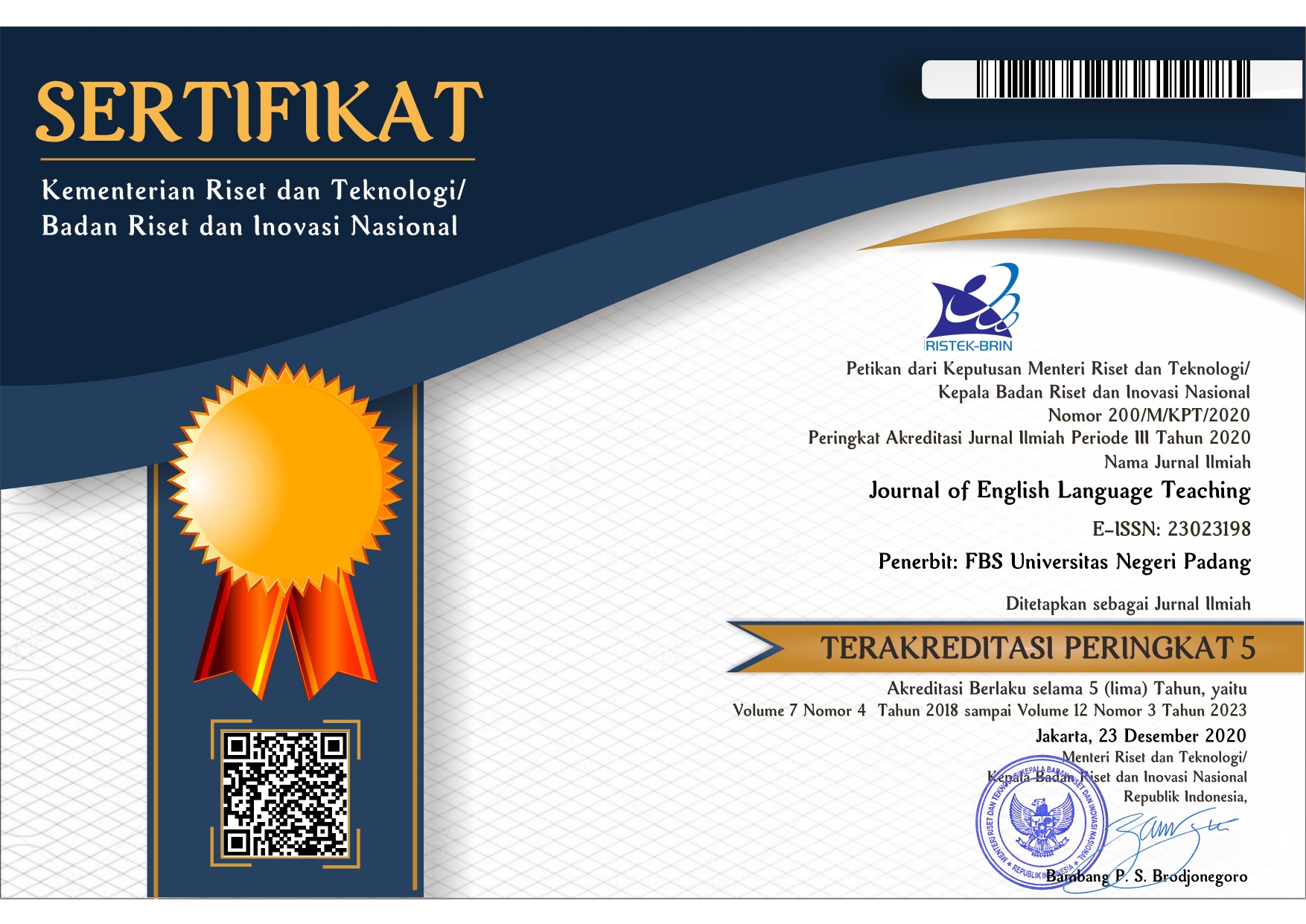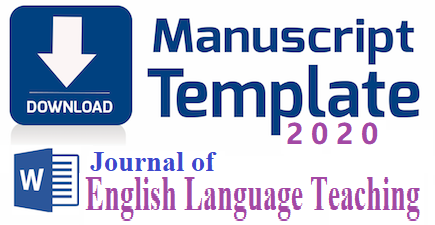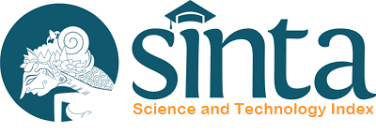EFL Teachers’ Perception on Online English Learning Activities during the Covid-19 Pandemic at High Schools in Padang
 ), Fitrawati Fitrawati(2),
), Fitrawati Fitrawati(2), (1) Universitas Negeri Padang
(2) Universitas Negeri Padang
 Corresponding Author
Corresponding Author
Copyright (c) 2021 Nursalina Nursalina, Fitrawati Fitrawati
DOI : https://doi.org/10.24036/jelt.v10i2.112341
Full Text:
 Language : en
Language : en
Abstract
The spread of the COVID-19 pandemic in Indonesia affects all walks of life, especially education. All schools are required to implement online learning. Along with online learning practices, teachers use online learning to support the teaching and learning process. This study aims to explore the EFL teachers' perceptions on English online learning activities during the pandemic at High Schools in Padang. This research was a descriptive study using a quantitative approach with the data collection technique using a questionnaire.The sample in this study was 42 teachers of SMPN 3, SMPN 4, SMPN 8, SMPN 12, SMPN 22, SMPN 34, SMAN 3, SMAN 5, SMAN 7, SMAN 9, SMAN 12, and SMAN 15 in Padang. They were given 40 questions to explore their perceptions about English online learning activities. The results showed that mostly the teachers had quite positive perceptions towards online learning activities. Still, other teachers had negative perceptions towards online learning activities. In detail, as many as; 1 teacher (2.38%) had very less positive perceptions, 9 teachers (21.43%) had less positive perceptions, 23 teachers (54.76%) had quite positive perceptions, 5 teachers (11.90%) had positive perception, and 4 teachers (9.52%) had very positive perceptions. The highest frequency was 54.76%, which was in the quite positive category. Thus, the teachers' perceptions on English online learning activities during the pandemic at High Schools in Padang was quite positive.
Keywords
References
Almosa, A. (2002). Use of computer in education, (2nd ed). Riyadh: Future Education Library.
Anderson, T. (2008). The theory and Practice of Online Learning, Second Edition. Athbasca University: AU Press Canada.
Appana, S. (2008). A Review of Benefits and Limitations of Online Learning in the Context of the Student, the Instructor and the Tenured Faculty. International Journal on E-Learning, 5-22.
Arora, I. D. (2019). Online Learning. 32-34.
Bozkurt, A., Jung, I., Xiao, F., & Vladimirschi, V. (2020). A Global Outlook to the Interruption of Education due to COVID-19 Pandemic: Navigating in a Time of Uncertainty and Crisis. Asian Journal of Distance Education.
Brown, C. (2017). Advantages and Disadvantages of Distance Learning. Retrieved from https://www.eztalks.com/elearning/advantages-and-disadvantages-of-distance-learning.html
Brown, C. L. (2015). Secondary Teachers' Perseptions of Online Learning. 107-108.
Carliner, S. (2004). An Overview of Online Learning. European Business Review.
Daniel C. Moos, R. A. (2009). Learning with Computer-Based Learning Environments. A Literature Review of Computer Self-Efficacy, 576-600.
Dyrud, M. A. (2000). The Third Wave: a Position Paper. Business Communication Quarterly, 81-93.
Jayson W. Richardson, E. H.-L. (2020). Shifting Teaching and Learning in Online Learning Spaces: An Investigation of a Faculty Online Teaching and Learning Initiative. Online Learning.
Lorraine R. Gay, G. E. (2016). Educational Research: Competencies for Analysis and Aplications. England: Pearson.
Marteney, T., & Bernadowski, C. (2016). Teachers’ Perceptions of the Benefits of Online Instruction for Students with Special Educational Needs. NASEN Helping Everyone Achieve.
Means, B., Toyama, Y., Murphy, R., Bakia, M., & Jones, K. (2009, May). Evaluation of Evidence-Based Practices in Online Learning: A Meta-Analysis and Review of Online Learning Studies. Retrieved from ERIC: https://eric.ed.gov/?id=ED505824
Muhkter, I. (2020). Teaching during COVID-19: Teachers and Students' Experience. Humanities and Social Sciences, 34.
Prasetyo, A. P. (2021). Persepsi Guru Dampak Pandemi Covid-19 terhadap Pelaksanaan Pembelajaran Daring di PAUD. Jurnal Pendidikan Anak Usia Dini, 633-640.
Rosenberg, M. J. (2002, October 21). E-Learning: Strategies for Delivering Knowledge in the Digital Age. Retrieved December 29, 2020, from Internet and Higher Education: https://www.qou.edu/ar/sciResearch/pdf/eLearningResearchs/eLearningStrategiesDelivering.pdf
Sadeghi, M. (2019). A Shift from Classroom to Distance Learning: Advantages and Limitation . International Journal of Research in English Education , 83-84.
Sandra C. Hughes, L. W.-J. (2002). Overcoming Social and Psychological Barriers to Effective Online Collaboration. Journal of Educational Technology & Society, 86-92.
Selim, H. M. (2007). Critical Success Factors for E-Learning Acceptance: Confirmatory Factor Models. Computers & Education, 396-413.
Singh, D. B. (2020). PERCEPTION OF TEACHERS ON ONLINE TEACHING IN HIGHER EDUCATION DURING COVID-19 LOCKDOWN. International Journal of Creative Research Thoughts .
Son, J.-B. (2015, March 16). Teaching English as a Second or Foreign Language. Retrieved from Online Tools for Language Teaching: http://www.teslej.org/wordpress/ issues/volume 15/ ej57/ ej57int/
Sugiyono. (2015). Metode Penelitian Kombinasi (Mix Methods). Bandung: Alfabeta.
Susan Ko, S. R. (2017). Teaching Online A Practical Guide. Routledge.
Todd, R. W. (2020). Teachers’ Perceptions of the Shift from the Classroom to Online Teaching. International Journal of TESOL Studies, 4-16.
Yanti, H., Setiawan, A., Nurhabibah, & Yannuar. (2018). Teacher’s Perception about the Use of E-Learning/Edmodo in Educational Activities. IOP Conference Series Materials Science and Engineering.
Zucker, R. F. (2002). Teaching and Learning Online – Communication, Community, and Assessment. University of Massachusetts.
 Article Metrics
Article Metrics
 Abstract Views : 1939 times
Abstract Views : 1939 times
 PDF Downloaded : 540 times
PDF Downloaded : 540 times
Refbacks
Copyright (c) 2021 Nursalina Nursalina, Fitrawati Fitrawati

This work is licensed under a Creative Commons Attribution-NonCommercial 4.0 International License.
















